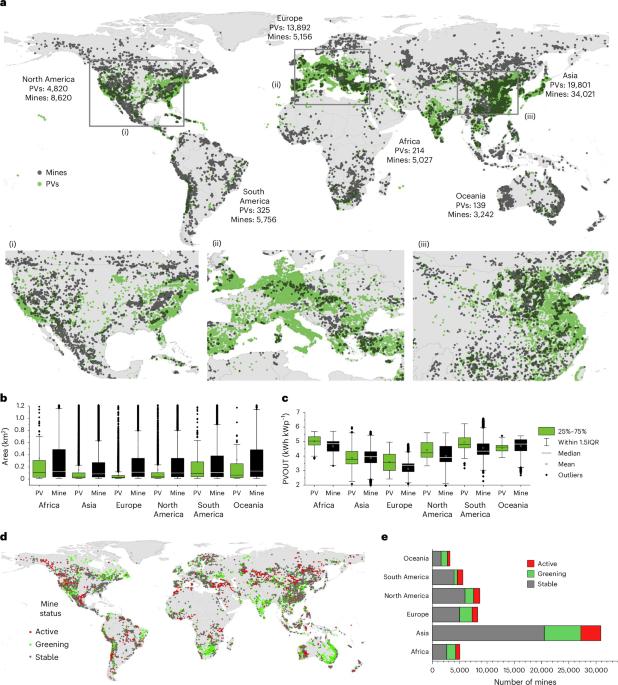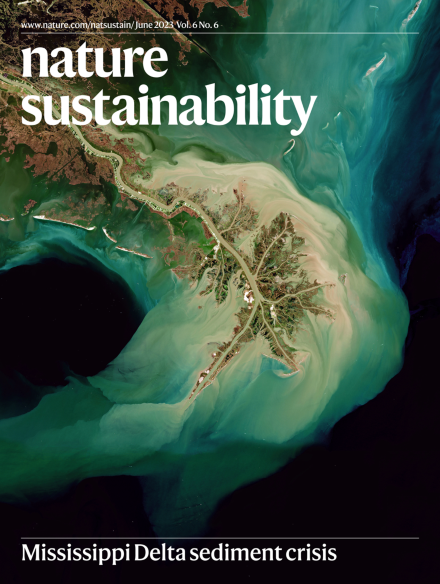Deploying photovoltaic systems in global open-pit mines for a clean energy transition
IF 27.1
1区 环境科学与生态学
Q1 ENVIRONMENTAL SCIENCES
引用次数: 0
Abstract
Climate action requires rapid scaling of solar energy while minimizing land conflicts. Solar farms often compete with agriculture and ecosystems, but repurposing abandoned mines could offer a solution. We assess global open-pit mining sites as potential solar hubs, analysing their technical feasibility and deployment timelines under diverse future scenarios. Using a residual artificial neural network and energy demand projections, we find that these disturbed lands could host solar installations covering around 48,000 km2—ten times the global solar footprint in 2018. Their total generation potential (4,764 TWh yr−1) could meet projected 2050 global electricity needs. While Mediterranean countries show the highest readiness for mine-to-solar conversions, African nations lag despite having optimal sunlight owing to infrastructure and policy barriers. Our scenario analysis reveals that deployment timing and scale depend heavily on economic growth, clean energy costs and fossil fuel prices—with aggressive transitions requiring solar capacity exceeding current mine areas by 106%. This study provides a road map for strategically aligning solar expansion with post-mining land revitalization. The transition to clean energy requires the expansion of solar photovoltaic systems, which often compete with other land uses. Now a study explores the potential benefits of solar installations in open-pit mines around the world.

在全球露天矿部署光伏系统,实现清洁能源转型
气候行动要求迅速扩大太阳能规模,同时尽量减少土地冲突。太阳能农场经常与农业和生态系统竞争,但重新利用废弃矿山可能提供一个解决方案。我们评估了全球露天矿作为潜在太阳能集散地的可能性,分析了它们在不同未来情景下的技术可行性和部署时间表。使用残余人工神经网络和能源需求预测,我们发现这些受干扰的土地可以容纳约48,000平方公里的太阳能装置,这是2018年全球太阳能足迹的十倍。它们的总发电潜力(4764太瓦时/年)可以满足2050年预计的全球电力需求。虽然地中海国家对地雷到太阳能的转换表现出最高的准备程度,但由于基础设施和政策障碍,非洲国家尽管拥有最佳的阳光,但仍然落后。我们的情景分析显示,部署时间和规模在很大程度上取决于经济增长、清洁能源成本和化石燃料价格——积极的转型需要太阳能容量超过当前矿区106%。该研究为太阳能扩张与矿业后土地振兴的战略调整提供了路线图。向清洁能源的过渡需要扩大太阳能光伏系统,这通常会与其他土地用途产生竞争。现在,一项研究探索了在世界各地的露天矿中安装太阳能装置的潜在好处。
本文章由计算机程序翻译,如有差异,请以英文原文为准。
求助全文
约1分钟内获得全文
求助全文
来源期刊

Nature Sustainability
Energy-Renewable Energy, Sustainability and the Environment
CiteScore
41.90
自引率
1.10%
发文量
159
期刊介绍:
Nature Sustainability aims to facilitate cross-disciplinary dialogues and bring together research fields that contribute to understanding how we organize our lives in a finite world and the impacts of our actions.
Nature Sustainability will not only publish fundamental research but also significant investigations into policies and solutions for ensuring human well-being now and in the future.Its ultimate goal is to address the greatest challenges of our time.
 求助内容:
求助内容: 应助结果提醒方式:
应助结果提醒方式:


